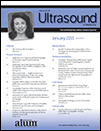Early Biometric Lag in the Prediction of Small for Gestational Age Neonates and Preeclampsia
Abstract
Objectives
An early fetal growth lag may be a marker of future complications. We sought to determine the utility of early biometric variables in predicting adverse pregnancy outcomes.
Methods
In this retrospective cohort study, the crown-rump length at 11 to 14 weeks and the head circumference, biparietal diameter, abdominal circumference, femur length, humerus length, transverse cerebellar diameter, and estimated fetal weight at 18 to 24 weeks were converted to an estimated gestational age using published regression formulas. Sonographic fetal growth (difference between each biometric gestational age and the crown-rump length gestational age) minus expected fetal growth (number of days elapsed between the two scans) yielded the biometric growth lag. These lags were tested as predictors of small for gestational age (SGA) neonates (≤10th percentile) and preeclampsia.
Results
A total of 245 patients were included. Thirty-two (13.1%) delivered an SGA neonate, and 43 (17.6%) had the composite outcome. The head circumference, biparietal diameter, abdominal circumference, and estimated fetal weight lags were identified as significant predictors of SGA neonates after adjusted analyses (P < .05). The addition of either the estimated fetal weight or abdominal circumference lag to maternal characteristics alone significantly improved the performance of the predictive model, achieving areas under the curve of 0.72 and 0.74, respectively. No significant association was found between the biometric lag variables and the development of preeclampsia.
Conclusions
Routinely available biometric data can be used to improve the prediction of adverse outcomes such as SGA. These biometric lags should be considered in efforts to develop screening algorithms for adverse outcomes.




